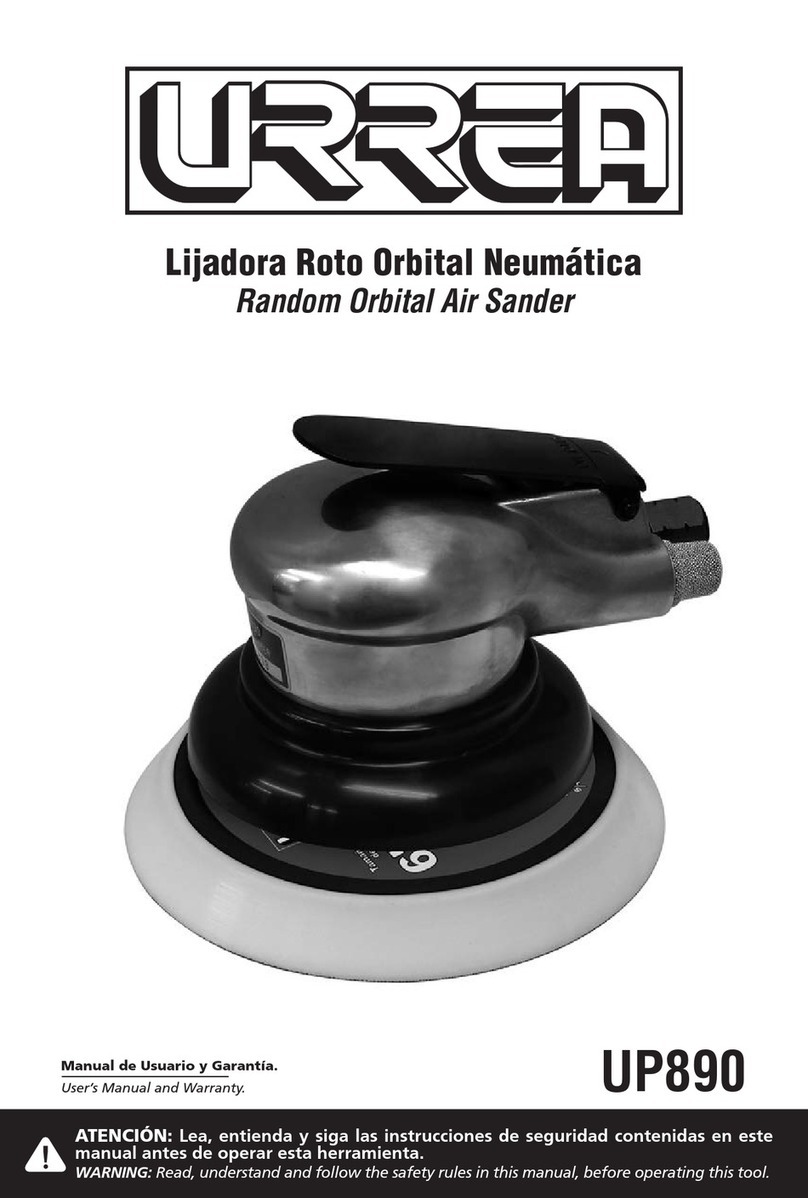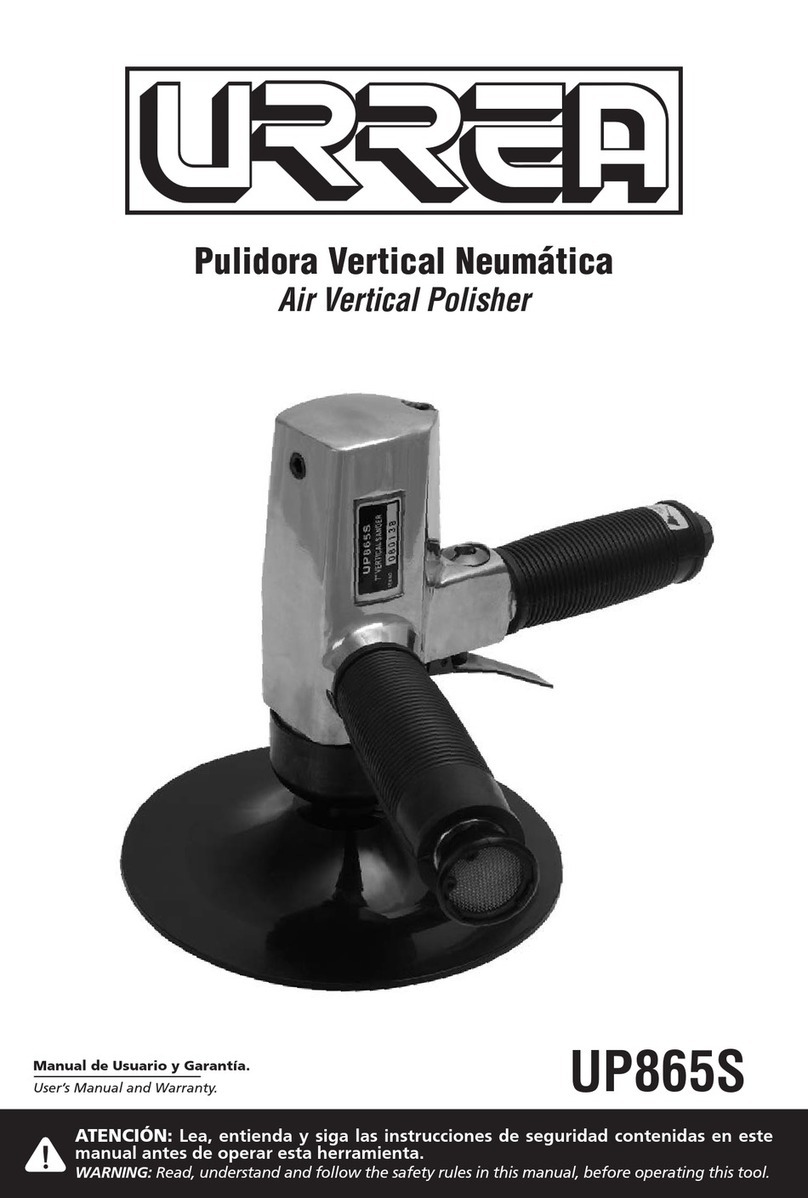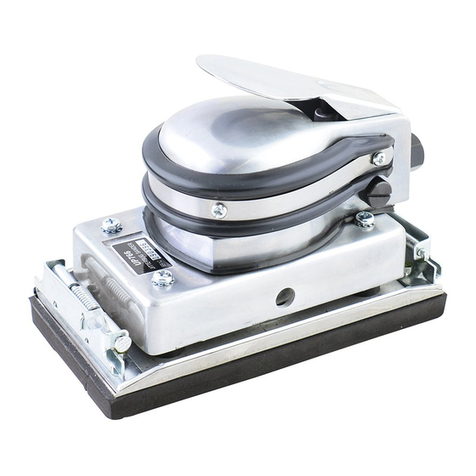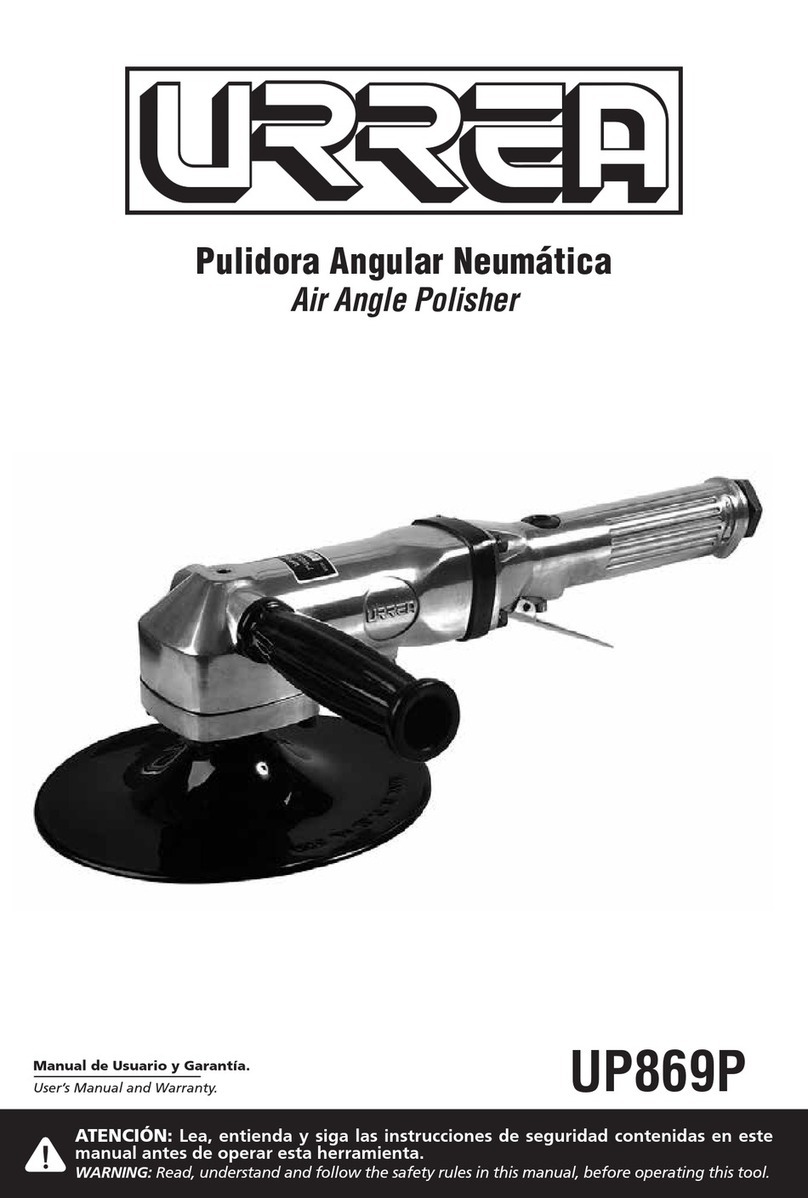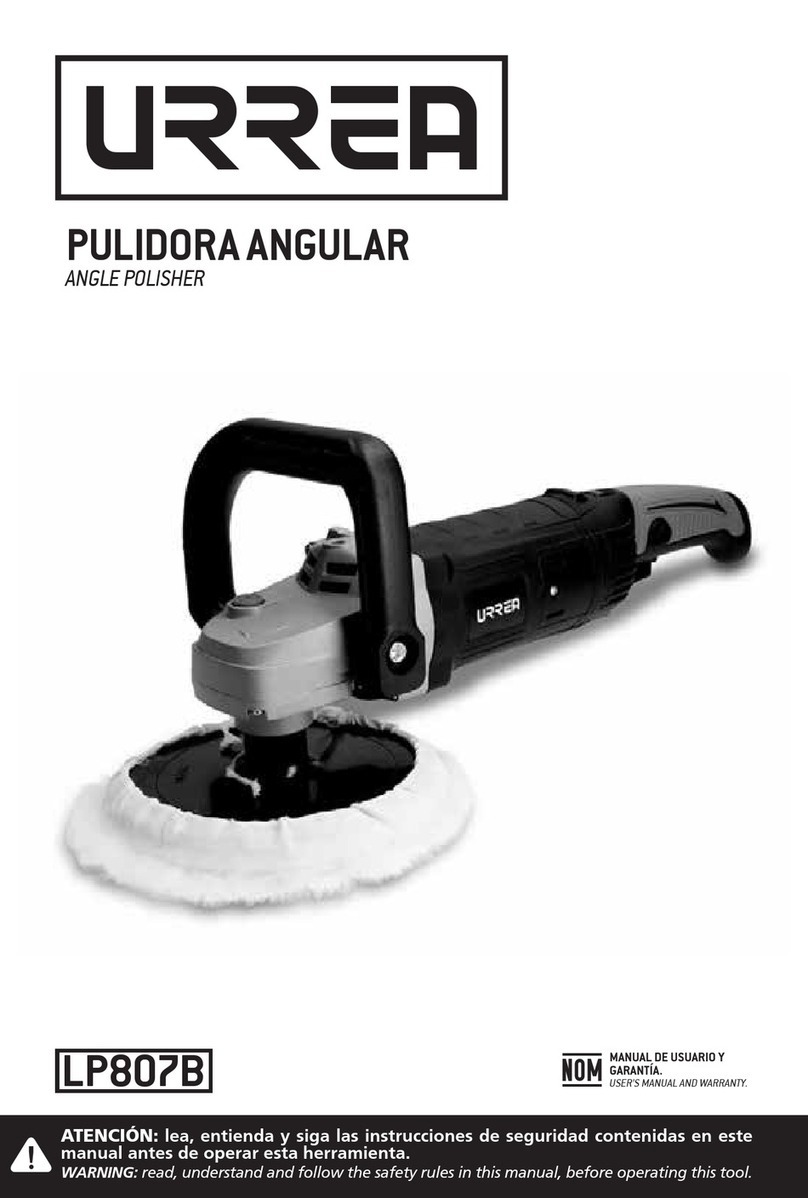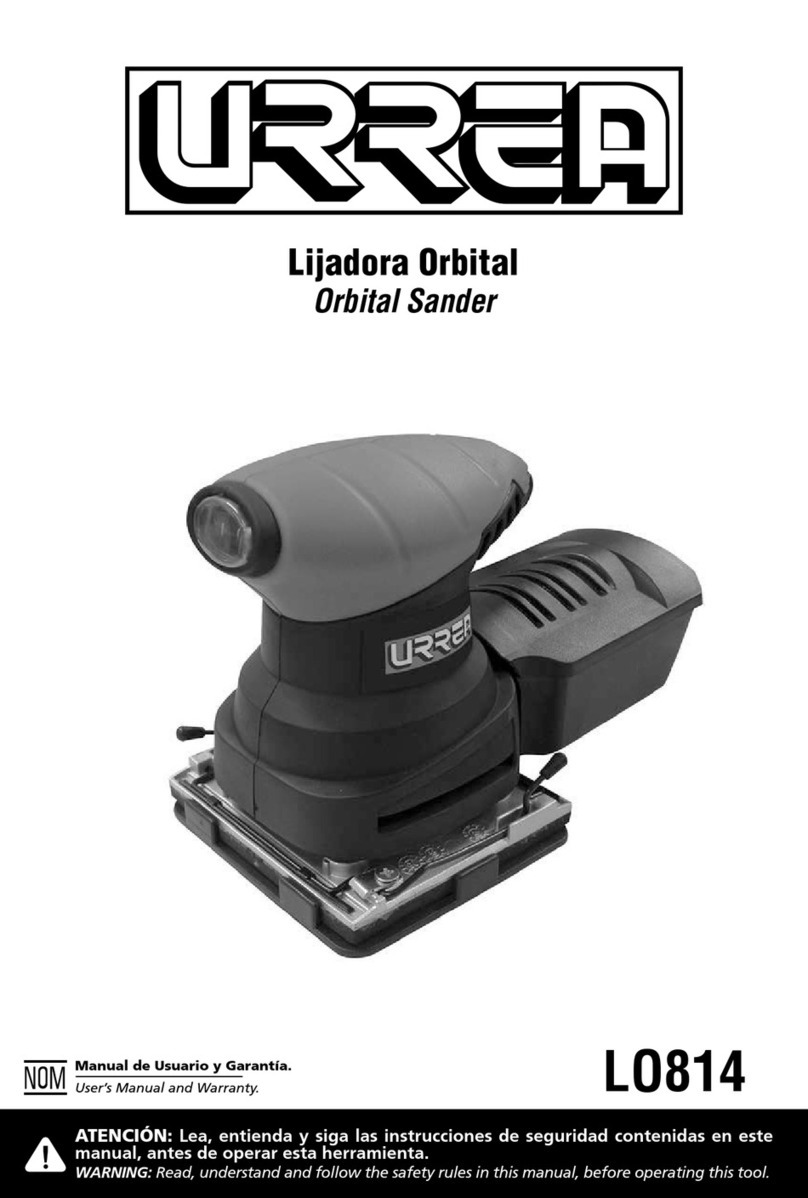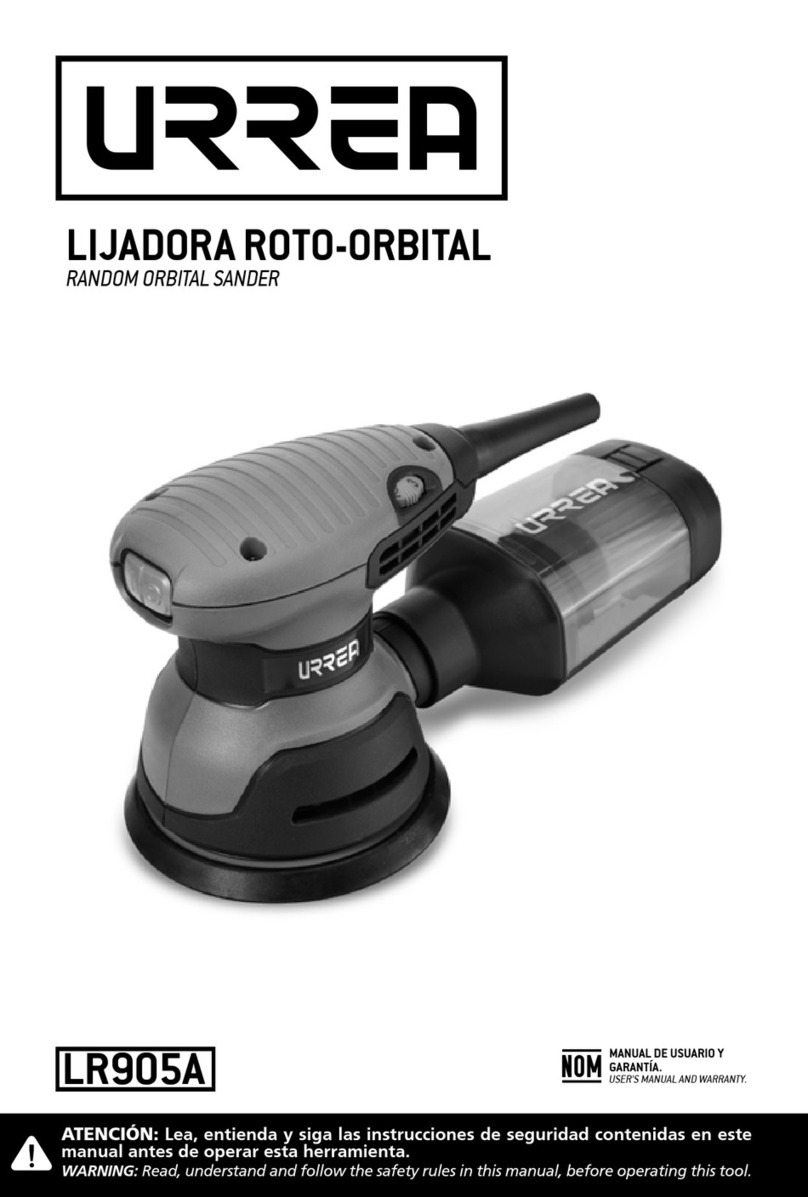
5
ENGLISH•User's Manual
GENERAL SAFETY RULES
To reduce the risks of electric shock, fire, and in-
jury to persons, read all the instructions before
using the tool.
WARNING: read and understand all instruc-
tions. Failure to follow all indications listed be-
low, may result in electric shock, fire and/or seri-
ous personal injury. SAVE THESE INSTRUCTIONS.
WORK AREA SAFETY
Keep the work area clean and well lighted. Clut-
tered benches and dark areas increase the risks
of electric shock, fire, and injury to persons.
Keep bystanders, children, and visitors away
while operating the tool. Distractions are able
to result in the loss of control of the tool.
PERSONAL SAFETY
Stay alert. Watch what you are doing and use
common sense when operating the tool. Do not
use the tool while tired or under the influence
of drugs, alcohol, or medication. A moment of
inattention while operating the tool increases
the risk of injury to persons.
Dress properly. Do not wear loose clothing or
jewelry. Contain long hair. Keep hair, cloth-
ing, and gloves away from moving parts. Loose
clothes, jewelry, or long hair increases the risk
of injury to persons as a result of being caught
in moving parts.
Avoid unintentional starting. Be sure the switch
is off before connecting to the air supply. Do
not carry the tool with your finger on the switch
or connect the tool to the air supply with the
switch on.
Remove adjusting keys and wrenches before
turning the tool on. A wrench or a key that is
left attached to a rotating part of the tool in-
creases the risk of personal injury.
Keep proper footing and balance at all times.
Proper footing and balance enables better con-
trol of the tool in unexpected situations.
Use safety equipment. A dust mask, non-skid
safety shoes and a hard hat must be used for
the applicable conditions.
Always wear eye protection. Wear ANSI-ap-
proved safety goggles.
Always wear hearing protection when using
the tool. Prolonged exposure to high intensity
noise is able to cause hearing loss.
Risk of Electric Shock. This tool is not provided
with an insulated gripping surface. Contact with
a “live” wire will also make exposed metal parts
of the tool “live” and shock the operator.
Avoid body contact with grounded surfaces.
There is an increased risk of electric shock if your
body is grounded.
Explore the work piece to avoid contact with
hidden wiring. Thoroughly investigate the
work piece for possible hidden wiring before
performing work. Contact with live wiring will
shock the operator.
To reduce the risks associated with loud noises:
• Immediately stop using the product if the muf-
fler for noise reduction has been damaged or
if it does not work properly. Have the product
repaired before putting it back into use.
To reduce the risks associated with vibration
emissions during use:
• If you experience any physical discomfort in
your hands / wrists, stop working quickly and
seek medical attention. Injuries to hands, wrists
and arms can be caused by repetitive move-
ments and work and by overexposure to vibra-
tion.
• Do not operate the tool on or near explosive
materials, such as flammable liquids, gases or
excessive dust in the air. The tool / abrasives can
create sparks when working with certain ma-
terials, which can cause the ignition of volatile
gases or dust.
TOOL USE AND CARE
1. Use clamps or another practical way to secure
and support the work piece to a stable platform.
Holding the work by hand or against the body
is unstable and is able to lead to loss of control.
2. Do not force the tool. Use the correct tool for
the application. The correct tool will do the job
better and safer at the rate for which the tool
is designed.
3. Do not use the tool if the switch does not turn
the tool on or off. Any tool that cannot be con-
trolled with the switch is dangerous and must
be repaired.
4. Disconnect the tool from the air source before
making any adjustments, changing accessories,
or storing the tool. Such preventive safety mea-
sures reduce the risk of starting the tool unin-
tentionally. Turn off and detach the air supply,
safely discharge any residual air pressure, and
release the trigger before leaving the work
area.
5. Store the tool when it is idle out of reach of
children and other untrained persons. A tool is
dangerous in the hands of untrained users.
6. Check for misalignment or binding of moving
parts, breakage of parts, and any other condi-
tion that affects the tool’s operation. If dam-
aged, have the tool serviced before using. Many
accidents are caused by poorly maintained tools.
There is a risk of bursting if the tool is damaged.
7. Use only accessories that are identified by the
manufacturer for the specific tool model. Use
of an accessory not intended for use with the

